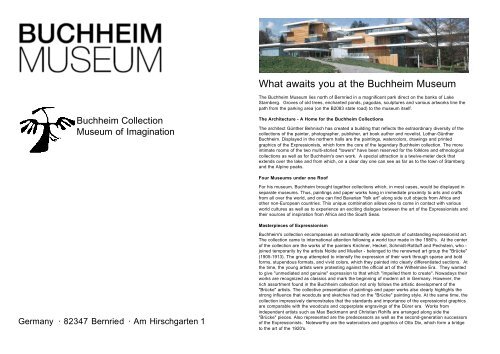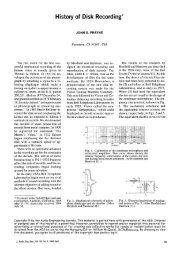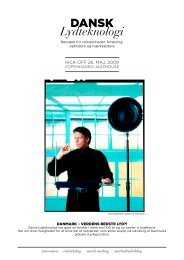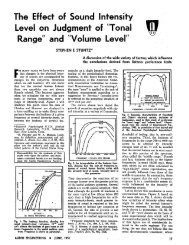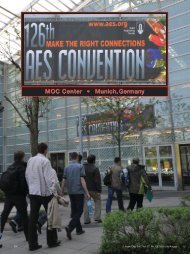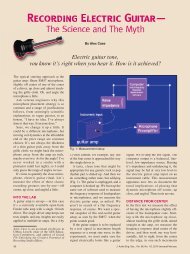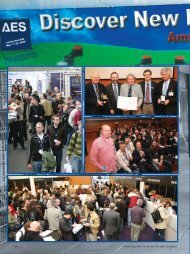Museum brochure (PDF)
Museum brochure (PDF)
Museum brochure (PDF)
You also want an ePaper? Increase the reach of your titles
YUMPU automatically turns print PDFs into web optimized ePapers that Google loves.
Buchheim Collection<br />
<strong>Museum</strong> of Imagination<br />
Germany · 82347 Bernried · Am Hirschgarten 1<br />
What awaits you at the Buchheim <strong>Museum</strong><br />
The Buchheim <strong>Museum</strong> lies north of Bernried in a magnificent park direct on the banks of Lake<br />
Starnberg. Groves of old trees, enchanted ponds, pagodas, sculptures and various artworks line the<br />
path from the parking area (on the B2083 state road) to the museum itself.<br />
The Architecture - A Home for the Buchheim Collections<br />
The architect Günther Behnisch has created a building that reflects the extraordinary diversity of the<br />
collections of the painter, photographer, publisher, art book author and novelist, Lothar-Günther<br />
Buchheim. Displayed in the northern halls are the paintings, watercolors, drawings and printed<br />
graphics of the Expressionists, which form the core of the legendary Buchheim collection. The more<br />
intimate rooms of the two multi-storied "towers" have been reserved for the folklore and ethnological<br />
collections as well as for Buchheim's own work. A special attraction is a twelve-meter deck that<br />
extends over the lake and from which, on a clear day one can see as far as to the town of Starnberg<br />
and the Alpine peaks.<br />
Four <strong>Museum</strong>s under one Roof<br />
For his museum, Buchheim brought together collections which, in most cases, would be displayed in<br />
separate museums. Thus, paintings and paper works hang in immediate proximity to arts and crafts<br />
from all over the world, and one can find Bavarian "folk art" along side cult objects from Africa and<br />
other non-European countries. This unique combination allows one to come in contact with various<br />
world cultures as well as to experience an exciting dialogue between the art of the Expressionists and<br />
their sources of inspiration from Africa and the South Seas.<br />
Masterpieces of Expressionism<br />
Buchheim's collection encompasses an extraordinarily wide spectrum of outstanding expressionist art.<br />
The collection came to international attention following a world tour made in the 1980's. At the center<br />
of the collection are the works of the painters Kirchner, Heckel, Schmidt-Rottluff and Pechstein, who -<br />
joined temporarily by the artists Nolde and Mueller - belonged to the renowned art group the "Brücke"<br />
(1905-1913). The group attempted to intensify the expression of their work through sparse and bold<br />
forms, stupendous formats, and vivid colors, which they painted into clearly differentiated sections. At<br />
the time, the young artists were protesting against the official art of the Wilhelmine Era. They wanted<br />
to give "unmediated and genuine" expression to that which "impelled them to create". Nowadays their<br />
works are recognized as classics and mark the beginning of modern art in Germany. However, the<br />
rich assortment found in the Buchheim collection not only follows the artistic development of the<br />
"Brücke" artists. The collective presentation of paintings and paper works also clearly highlights the<br />
strong influence that woodcuts and sketches had on the "Brücke" painting style. At the same time, the<br />
collection impressively demonstrates that the standards and importance of the expressionist graphics<br />
are comparable with the woodcuts and copperplate engravings of the Dürer era. Works from<br />
independent artists such as Max Beckmann and Christian Rohlfs are arranged along side the<br />
"Brücke" pieces. Also represented are the predecessors as well as the second-generation successors<br />
of the Expressionists. Noteworthy are the watercolors and graphics of Otto Dix, which form a bridge<br />
to the art of the 1920's.
E. L. Kirchner, Black Stallion, Lady Rider and Clown, 1909 Otto Dix, Modern Couple Dancing, 1922<br />
© VG Bild-Kunst, Bonn 2001<br />
Alexej von Jawlensky, Head in Blue, 1912<br />
Erich Heckel, Pechstein Sleeping, 1910<br />
© Nachlass Erich Heckel, Hemmenhofen<br />
Buchheim Collection · <strong>Museum</strong> of Imagination<br />
The Collection of a Painter<br />
The best way to understand the Buchheim collection is through the painter and artist Buchheim<br />
himself, because Buchheim - who was an already a gifted painter as a young boy - is essentially a<br />
visual person. He uses what he visually perceives as the subject matter for his pictures and<br />
photographs, as well as for his novels. Sight is the primary sense he uses to experience and<br />
understand the world. Thus, with each new and unique piece that finds its way into his collection, he<br />
incorporates a new terrain. Buchheim does not merely collect, he discovers. He does not cling to the<br />
need to classify art as "valuable" or "worthless", or categorize it as "greater" or "lesser" art, nor does<br />
he restrict himself to or specialize in only one or a few areas. Buchheim is continually open to the<br />
richness and diversity of life and never ceases to be amazed by the multiplicity of forms found in<br />
nature and the infinite inventiveness of mankind.<br />
The Living <strong>Museum</strong> - Rotation of Exhibits, Special Exhibitions and Events<br />
One visit to the museum will reveal merely a fraction of what the museum has to offer. Because<br />
Buchheim's collections, including those in the area of Expressionism, are so extensive, the museum<br />
can continually exhibit new works for decades. Special exhibitions from the "Graphics cabinet" include<br />
works from Picasso, Léger, Matisse, Braque and Chagall - all part of the Buchheim collection. Those<br />
interested in learning more about Buchheim and the Buchheim collection can attend block programs<br />
offered by the museum. These include film and slide lectures, workshops for children and adults,<br />
readings, concerts and other similar events.<br />
Folklore and Ethnological Exhibits<br />
The kaleidoscope of folklore and ethnological pieces, modestly described as "side-collection", include<br />
glass paintings, Art Deco vases, carrousel animals, approximately 3000 glass paper weights,<br />
immense quantities of popular printed graphics, Bauernschränke (cupboards and wardrobes<br />
decorated with folk art motives), porcelain, ceramics, glass, textiles and jewelry from around the<br />
world, sculptures, masks and cult objects from Africa, Indonesian shadow figures, Chinese ink<br />
drawings, Japanese woodcuts, posters and much more. Additional exhibits include the work of<br />
autodidactic artists such as the virtuoso wood sculptor Hans Schmitt, the folk artist Max Raffler, the<br />
ventriloquist Muskat and the Parisian Naive artist Hector Trotin. Although at first glance it is may seem<br />
difficult to find a common thread running through Buchheim's remarkably diverse art collection, when<br />
one takes time to consider Buchheim's enthusiasm for strong expressions, vivid colors, intricate<br />
craftmanship, and various forms of "folk art", one can begin to find a navigable path through the<br />
collection's creative diversity.<br />
Giftshop and Cafeteria<br />
In addition to a cheerful cafeteria with an outdoor terrace, the museum has a gift shop which offers<br />
not only postcards and posters, books from Lothar-Günther Buchheim, catalogues, illustrated books,<br />
and selected literature relating to the specific collections, but also a wide assortment of arts and crafts<br />
from all over the world.
Photos: L.-G. Buchheim<br />
Internet: www.buchheimmuseum.de<br />
E-mail: info@buchheimmuseum.de<br />
Info-telephone: + 49 - (0) 8158 - 997060<br />
Fax: + 49 - (0) 8158 - 997061<br />
April to October<br />
Monday to Friday 10 a.m. – 6 p.m.<br />
Saturday and Sunday 10 a.m. – 8 p.m.<br />
Public Holidays 10 a.m. – 8 .p.m.<br />
November to March<br />
Tuesday to Friday 10 a.m. – 5 p.m.<br />
Saturday and Sunday 10 a.m. – 6 p.m.<br />
Public Holidays 10 a.m. – 6 p.m.<br />
Adults € 7,80<br />
Youths 6-17 years,<br />
Students, disabled persons € 3,50<br />
Groups of 15 and<br />
more, per person € 6,20<br />
School classes, per person € 2,50<br />
Family ticket € 18,00<br />
Reduced admission for users of<br />
public transportation (MVV) or the<br />
Bavarian Seenschifffahrt<br />
(ferry), per person € 6,20<br />
Children up to 6 years free admission<br />
How to find us:<br />
S6 to Tutzing and RVO Bus route 9614, direction Penzberg.<br />
Deutsche Bahn (train) to Bernried.<br />
S6 to Starnberg and then Bavarian Seenschifffahrt (ferry)<br />
to Bernried.<br />
Highway A95 Munich - Garmisch-Partenkirchen,<br />
exit Seeshaupt, direction Bernried.


